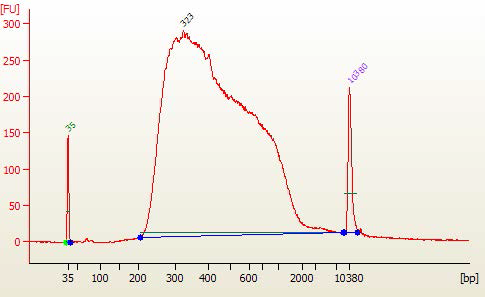Home
Resources
Troubleshooting Guides
NEBNext® RNA Library Prep Kit Troubleshooting Guide (NEB #E7760, E7765, E7770, E7775, E7420, E7530)
NEBNext® RNA Library Prep Kit Troubleshooting Guide (NEB #E7760, E7765, E7770, E7775, E7420, E7530)
| Observations | Possible Causes | Effect | Suggested Solutions |
| Presence of
Bioanalyzer peaks
<85 bp (Figure 1) |
• Presence of Primers remaining after PCR clean up | Primers cannot cluster or be sequenced, but can bind to flowcell and reduce cluster density | • Clean up PCR again with 0.9X AMPure beads (second clean up may result in reduction of library yield) |
| Presence of
127 bp adaptor/dimer
Bioanalyzer
peak (Figure 1) |
• Addition of
non-diluted adaptor
• RNA input was too low • RNA was over fragmented or lost during fragmentation • Inefficient Ligation |
Adaptor-dimer will cluster and be sequenced. If ratio is low compared to library, may not be a problem but some reads will be dimers. | • Dilute adaptor
(10 fold dilution)
before setting
up ligation
reaction
• Clean up PCR reaction again with 0.9X SPRIselect Beads or NEBNext Sample Purification Beads (second clean up may result in reduction of library yield). |
| Presence of
additional
Bioanalyzer
peak at higher
molecular weight
than the expected
library size (~ 1,000 bp) (Figure 2) |
• PCR artifact (over-amplification). Represents single-stranded library products that have self-annealed. If the PCR cycle number (or PCR input amount) is too high; in the late cycles of PCR the primers become limiting. Therefore, the adaptor sequences on either end of the fragment anneal to each other. This creates molecules with different insert sizes that run slower in the bioanalyzer. | If ratio is low compared to library, may not be a problem for sequencing | • Reduce number of PCR cycles. |
| Broad library
size distribution (Figure 3) |
• Under-fragmentation of the RNA | Library size will contain longer insert sizes | • Increase RNA fragmentation time |




